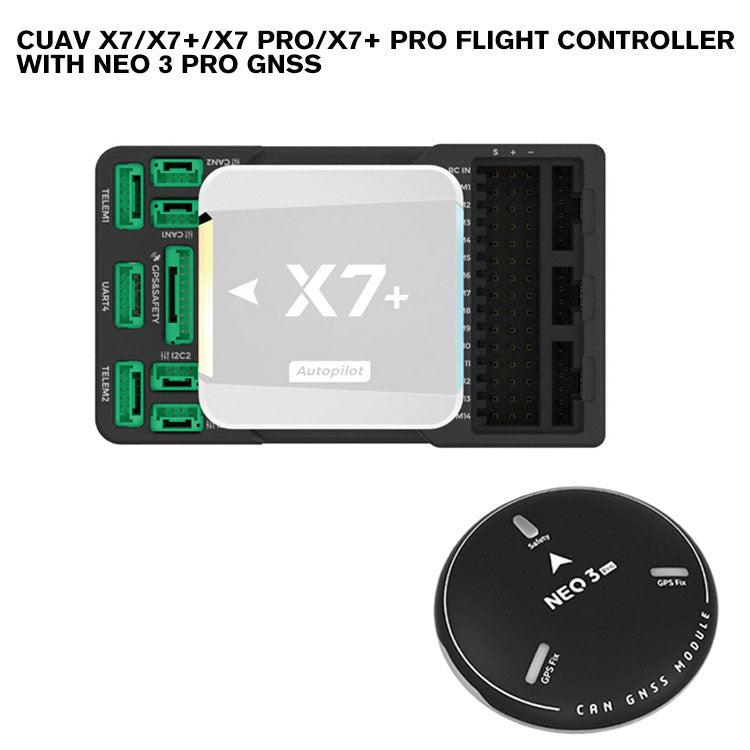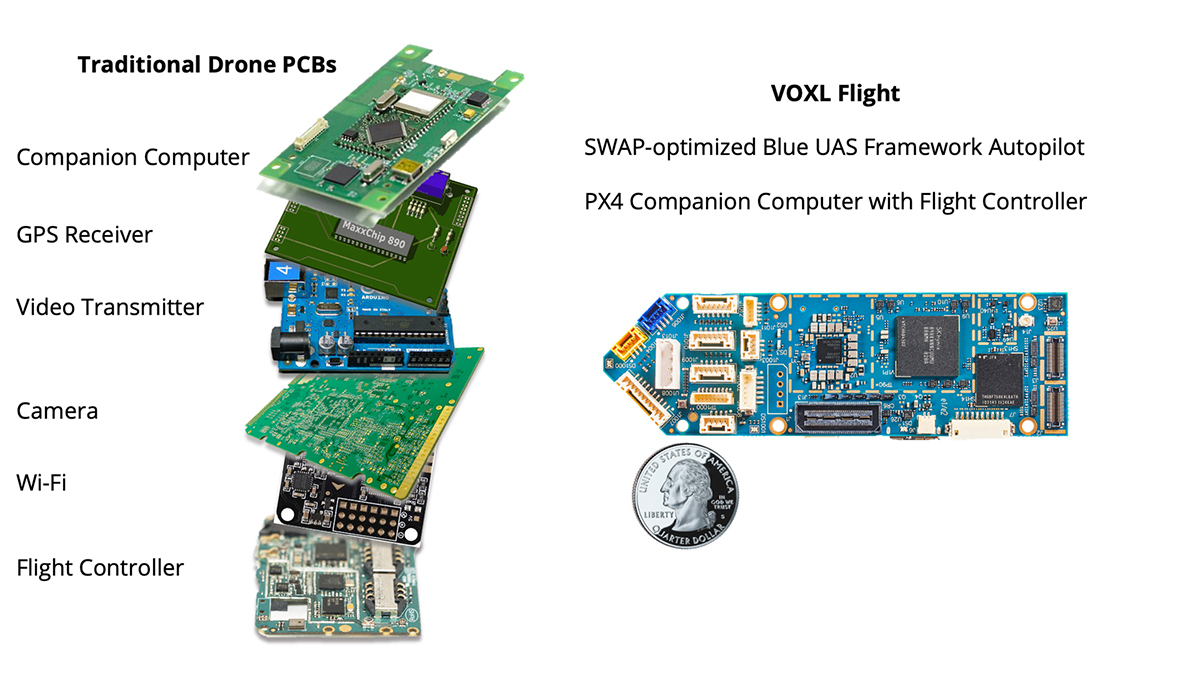SparkNavi Drone Flight Controller and GNSS/INS Made in Taiwan: Innovation for Professional UAVs
SparkNavi Drone Flight Controller and GNSS/INS Made in Taiwan: Innovation for Professional UAVs
Blog Article
Checking Out the Function of Drone Flight Controllers in Enhancing Flight Security and Navigating Performance
The development of drone technology has significantly enhanced the value of flight controllers, which serve as the mind of these airborne lorries. By incorporating real-time data from a selection of sensors, flight controllers boost flight security and navigation performance, making sure that drones can run efficiently even in complex atmospheres.

Comprehending Trip Controllers
Flight controllers are important parts in the performance of drones, working as the minds that support and take care of trip procedures. These innovative tools process information from numerous sensing units, consisting of accelerometers, gyroscopes, and GPS, to make certain that the drone preserves its intended flight course. The flight controller translates this information and implements commands based upon pre-defined algorithms, enabling the drone to react to environmental modifications, such as wind or challenges.
The primary function of a trip controller is to keep security during flight. It achieves this by making real-time adjustments to the drone's electric motors and control surfaces, ensuring equilibrium and control. Furthermore, modern trip controllers incorporate innovative attributes such as waypoint navigation, enabling automated trip courses and enhanced functional performance.
Recognizing the style of flight controllers is essential for both enthusiasts and specialists. As innovation breakthroughs, flight controllers have actually come to be much more small and qualified, integrating fabricated intelligence to adapt and boost decision-making processes to complicated flight scenarios.
Trick Components of Flight Security
Achieving optimal trip stability in drones relies upon numerous essential components that operate in performance to make sure smooth and regulated procedures. Central to this security is the trip controller itself, which refines data from various sensors to preserve the desired trip attitude. This consists of accelerometers and gyroscopes that gauge activity and orientation, allowing for real-time changes to the drone's setting.
An additional critical component is the digital speed controllers (ESCs), which regulate the power provided to the electric motors. By finely adjusting electric motor rates in response to flight controller commands, ESCs aid preserve equilibrium and counteract disturbances brought on by wind or abrupt activities.
Furthermore, the style of the drone's structure plays a critical function in trip stability. A well-structured framework decreases resonances and enhances the overall wind resistant account, adding to smoother trip characteristics. Lastly, the integration of sophisticated formulas within the trip controller help in anticipating adjustments, guaranteeing a versatile and receptive trip experience.
With each other, these parts form a natural system that enhances a drone's security, enabling for precise maneuvering and improved efficiency in different flight conditions.
Navigating Effectiveness Methods
Performance in navigation is crucial for enhancing drone procedures, especially in complicated atmospheres. Reliable navigating methods boost the ability of drones to pass through difficult surfaces and avoid barriers, consequently boosting operational effectiveness and safety and security.
One famous strategy is the implementation of sophisticated GPS and inertial measurement devices (IMUs) that offer precise place tracking and orientation data. These modern technologies permit drones to calculate optimum trip courses in real-time, thinking about different aspects such as wind conditions and prospective barriers.
One more method involves using formulas for path preparation and optimization. Formulas such as A * and Dijkstra's formula can be released to determine one of the most reliable course while decreasing energy consumption and flight time. In addition, integrating equipment discovering versions can enable drones to adaptively gain from their environments, enhancing navigation capabilities via experience.

Impact on Autonomous Drones
The combination of sophisticated navigating strategies has exceptionally changed the abilities of autonomous drones, allowing them to operate with higher autonomy and precision. SparkNavi drone flight controller and GNSS/INS made in taiwan. These enhancements are largely credited to advanced flight controllers that utilize real-time information processing and sensor blend, allowing drones to browse intricate atmospheres perfectly
The influence on independent drones expands past simple navigating; it includes boosted challenge avoidance, boosted stability during vibrant problems, and boosted mission integrity. By leveraging formulas that incorporate equipment understanding and expert system, drones can adjust to changing circumstances, making notified decisions that maximize their flight courses while minimizing threats.
Furthermore, the implementation of durable flight controllers has actually promoted the execution of complex jobs, such as airborne assessments, shipment services, and farming monitoring, with marginal human intervention. This capacity not only streamlines procedures however also reduces human error, consequently enhancing total safety.
Consequently, the operational range of self-governing drones has actually broadened dramatically, making them essential tools in different sectors. Their capacity to do successfully in varied circumstances emphasizes the important function that progressed flight controllers play fit the future of unmanned airborne systems.
Future Patterns in Flight Control
Frequently, developments in trip control modern technology are poised to redefine the landscape of drone procedures in the coming years. Emerging patterns suggest a substantial change in the direction of improved fabricated knowledge (AI) integration, allowing trip controllers article to refine real-time data much more effectively. This development will certainly facilitate improved decision-making abilities, allowing drones to adjust to vibrant ecological problems autonomously.
In addition, the execution of device discovering algorithms is expected to boost anticipating upkeep, therefore reducing downtime and prolonging the lifecycle of drone components. This proactive technique to upkeep will be critical as drone applications broaden throughout numerous markets, from agriculture to logistics.

.png)
Lastly, developments in protected communication procedures will address safety and regulatory problems, ensuring that drones can operate seamlessly in stuffed airspaces (SparkNavi drone flight controller and GNSS/INS made in taiwan). Jointly, these patterns direct towards a future where flight control systems are not only smarter and a lot more also capable however efficient of operating securely in a significantly incorporated airspace
Final Thought
To conclude, drone flight controllers are essential to boosting flight stability and navigation performance with the advanced handling of sensor information. By keeping optimum trip attitudes and employing sophisticated algorithms for course optimization and obstacle avoidance, these controllers considerably add to the autonomy and functional safety and like this security of drones. go to these guys As technology proceeds to develop, further developments in trip control systems are anticipated, guaranteeing improved performance and increased capabilities in the world of unmanned aerial cars.
By integrating real-time information from a selection of sensing units, trip controllers enhance flight stability and navigation effectiveness, guaranteeing that drones can operate efficiently also in intricate atmospheres.Trip controllers are indispensable parts in the functioning of drones, serving as the minds that take care of and stabilize trip procedures. In addition, contemporary flight controllers integrate advanced features such as waypoint navigating, allowing for automated trip courses and improved operational efficiency.
Central to this security is the trip controller itself, which refines data from numerous sensors to keep the desired trip mindset.In final thought, drone trip controllers are integral to enhancing flight security and navigation efficiency through the advanced handling of sensor data.
Report this page